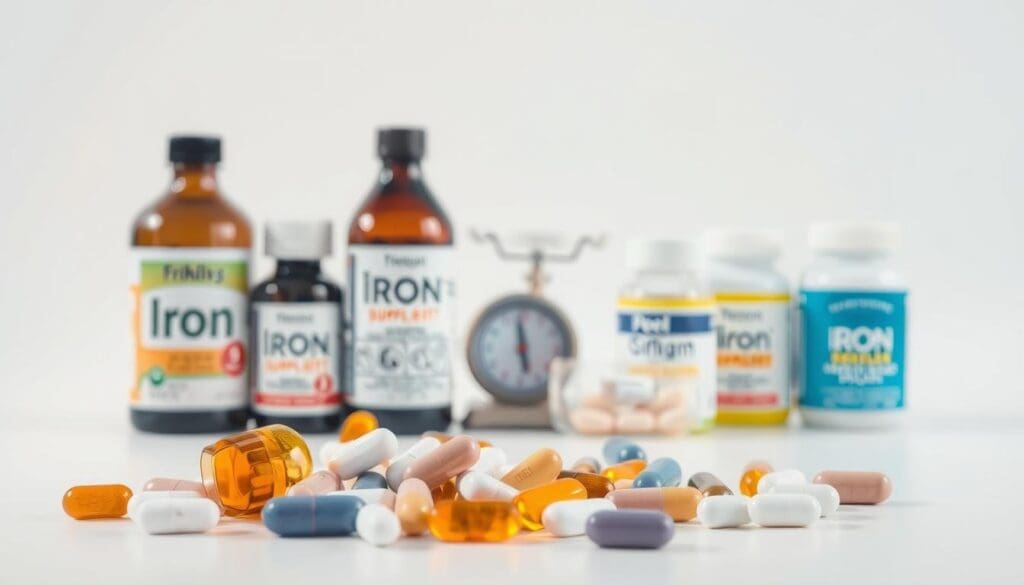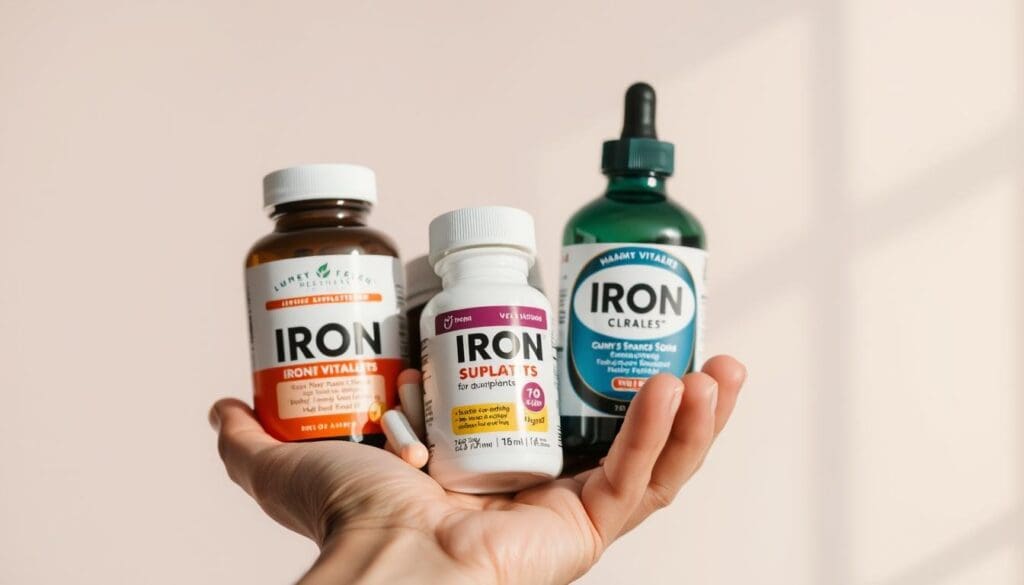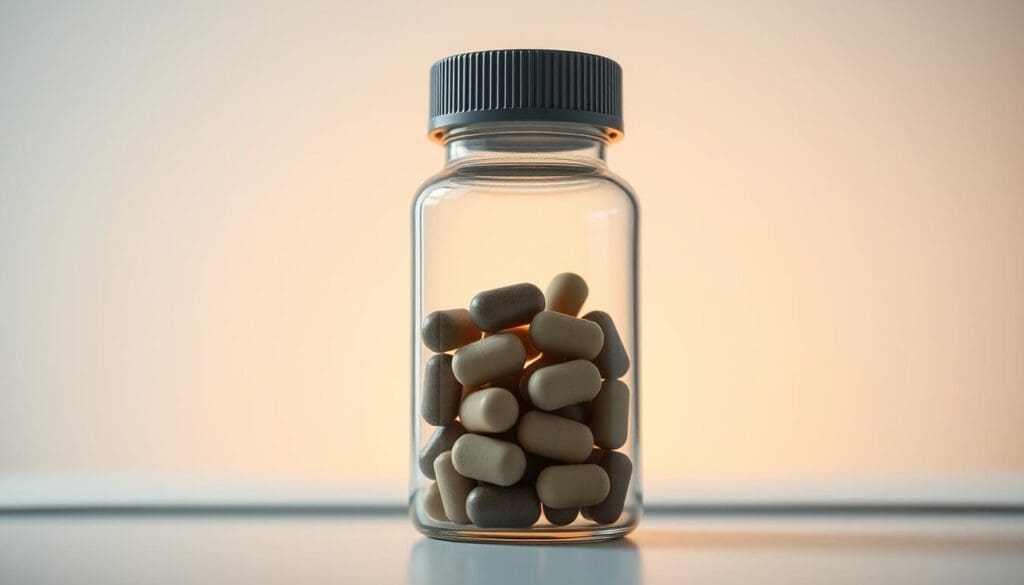Last Updated on November 17, 2025 by Ugurkan Demir

Knowing how much iron to take for anemia is key to treating it effectively. Iron deficiency anemia affects millions globally. At Liv Hospital, we provide research-backed advice to help patients understand their individual iron needs. Iron is essential for making hemoglobin and transporting oxygen in the body. The dosage depends on factors like anemia severity, age, and supplement type. Finding the correct iron dosage for anemia is personalized, as our healthcare team works closely with patients to create tailored treatment plans. This individualized approach helps optimize outcomes while minimizing side effects and ensuring safety.
Iron deficiency anemia happens when the body doesn’t have enough iron to make hemoglobin. This can be fixed with the right supplements. It’s when there are fewer red blood cells or less hemoglobin, making it hard for tissues and organs to get enough oxygen.
To get why iron supplements are key, we need to know why people get iron deficiency anemia. We’ll look at the reasons and why the right amount of iron is important for treatment.
Iron deficiency anemia can come from not eating enough iron, losing too much blood, or needing more iron when pregnant. Not getting enough iron from food is a big reason, mainly for those who don’t eat meat or animal products. This is because plant-based iron is harder for the body to absorb.
Another reason is losing blood over time, like from ulcers or cancer in the stomach. Women who lose a lot of blood during their periods also often get iron deficiency anemia.
| Cause | Description | Population Affected |
| Inadequate Dietary Iron | Lack of enough iron in the diet, often seen in vegetarians and vegans | Vegetarians, vegans, and those with limited diets |
| Chronic Blood Loss | Blood loss from stomach problems or heavy periods | People with stomach diseases, women with heavy periods |
| Increased Iron Requirements | More iron is needed during pregnancy and when breastfeeding | Pregnant women, breastfeeding moms |
Getting the right amount of iron is key to treating iron deficiency anemia. Too little iron won’t fix the problem, while too much can be harmful. It can cause nausea, vomiting, and stomach pain.
Effective iron supplementation is all about finding the right balance. It’s about giving enough iron to fix the problem without causing harm. This depends on how severe the deficiency is and any health issues the person might have.

Knowing why iron deficiency anemia happens and why the right iron dose is important helps doctors create better treatment plans. This improves how well patients do.
Understanding the right iron dosage is key for adults with iron deficiency anemia. Iron supplements are often used to treat this condition. The dosage is important for how well it works.
Adults usually need 120 mg of elemental iron per day. This amount is enough to treat iron deficiency anemia. Remember, this is elemental iron, which is what your body can absorb.

Treatment lasts for three months to fill up iron stores. It’s important to stick to this plan for it to work. Here are some things to keep in mind:
Children with iron deficiency anemia need the right amount of iron to get better. The amount is based on their weight. This way, they get enough iron without getting too much.
The recommended iron dosage for kids is 3 mg per kilogram of body weight each day. This helps doctors figure out the right dose. For example, a 20 kg child would need 60 mg of iron daily (3 mg/kg * 20 kg).
Key considerations for weight-based dosing include:
Even with weight-based guidelines, there’s a daily limit to keep in mind. For kids, the daily iron dose should not go over 60 mg. This limit helps avoid iron overdose and toxicity.
Parents and caregivers should work with their doctor to find the best iron dose for their child. The child’s age, weight, and how bad their anemia is all matter in finding the right dose.
By following these guidelines and working with healthcare professionals, parents can help ensure their child gets the right amount of iron. This helps treat their anemia effectively.
When treating iron deficiency anemia, how you take oral iron supplements matters a lot. Different ways of taking iron have been tested to find the best one.
Studies show that both daily and alternate-day dosing have their good points. Daily dosing is the usual method, aiming to keep iron levels steady. But some research says alternate-day dosing might work better for some people because it helps iron absorption.
A study found that alternate-day dosing led to better iron absorption. This might be because our bodies naturally change how well we absorb iron.
The split dosing method means taking smaller doses of iron throughout the day. It tries to lessen stomach problems while keeping iron levels up.
Research on split dosing has mixed results. Some studies say it makes iron supplements easier to take by lowering the dose in the gut. But others don’t see a big difference in how well it works compared to taking it all at once.
| Dosing Strategy | Effectiveness | Gastrointestinal Tolerance |
| Daily Dosing | High | Moderate |
| Alternate-Day Dosing | High | High |
| Split Dosing | Moderate to High | High |
In conclusion, different ways to take oral iron supplements have their own ups and downs. Knowing this helps doctors create treatment plans that fit each patient’s needs.
Iron bisglycinate is a good choice for those who find other iron supplements hard to take. It’s made by linking iron to the amino acid glycine. This makes it gentler on the stomach than other iron supplements.
The usual dose of iron bisglycinate is 15-30 mg of elemental iron per day. This amount is often enough to help with iron deficiency. It also helps to reduce stomach problems.
Iron bisglycinate is known for its high bioavailability and gentle effect on the stomach. It’s a great option for people who can’t handle other iron supplements well. Choosing iron bisglycinate can help avoid stomach issues while treating anemia effectively.
It’s best to talk to a healthcare professional about the right dose and type of iron bisglycinate for you.
Managing iron deficiency anemia requires knowing the safe iron dosage. The right amount of iron is key to treating anemia without harm. It’s important to find the balance between treating the condition and avoiding side effects.
The highest safe iron dose is usually 200 mg elemental iron per day. Taking more can lead to serious problems like stomach issues. It’s vital to stick to these limits when using iron supplements.
Maximum Daily Iron Dosage Guidelines
| Age Group | Maximum Daily Iron Dosage |
| Adults | 200 mg elemental iron |
| Children (weight-based) | 3 mg/kg body weight |
| Pregnant Women | Up to 30 mg elemental iron |
Too much iron can cause serious problems. Common issues include constipation, nausea, and stomach pain. In extreme cases, it can lead to iron toxicity, a dangerous condition.
It’s essential to monitor iron levels and adjust supplementation to avoid these complications.
Knowing the safe iron limits and the risks of too much iron helps in treating anemia safely. This approach ensures effective treatment without harm.
Iron supplements are needed when ferritin levels are low, even without anemia. This is because low ferritin means iron stores are running out. We’ll look at the right starting doses and why it’s key to keep an eye on treatment.
For those with low ferritin but no anemia, the starting iron dose varies. A common dose is 50-100 mg of elemental iron per day. This amount depends on ferritin levels, health, and stomach issues.
It’s important to remember that different iron types have different doses. For example, iron bisglycinate, which is easier on the stomach, might need a bit more because it’s better absorbed.
| Ferritin Level (ng/mL) | Recommended Starting Dose (mg/day) | Frequency of Monitoring |
| 30-50 | 50 | Every 3 months |
| 15-29 | 100 | Every 2 months |
| <15 | 100-150 | Monthly |
Keeping an eye on iron supplements is key when ferritin is low, but there’s no anemia. Blood tests are needed to see how treatment is working and to adjust the dose. Ferritin levels are checked regularly to make sure iron stores are being built up properly.
Changes to treatment are made based on how the body responds. If ferritin levels get back to normal, the dose might be lowered. If levels stay low, the dose could be increased or the type of iron changed to help it absorb better.
By watching and adjusting iron supplements closely, doctors can manage low ferritin levels well. This stops iron deficiency anemia from happening and helps patients get better.
When you take iron supplements, optimizing iron absorption is key to treating iron deficiency anemia. How you take iron supplements matters a lot. This includes timing iron intake and other factors that affect how well your body absorbs it.
To get the most iron, take your supplements on an empty stomach. Do this 1 hour before or 2 hours after eating. But if you get stomach upset, try taking it with a little food. This might make you feel better, but it might not absorb as well.
Vitamin C can help your body absorb iron better. So, eating foods or drinking drinks with vitamin C, like orange juice, can be good. But some foods and drinks can block iron absorption. Avoid tea, coffee, milk, and foods high in calcium or phytates for at least 2 hours before or after taking iron.
Iron supplements can sometimes upset your stomach. Start with a small dose and slowly increase it. This lets your body get used to it. Taking it with food might help your stomach, but it might not absorb as well.
Some people find iron bisglycinate easier on their stomach. It’s a gentler form of iron. Also, breaking your daily dose into smaller parts can help. If you’re really struggling, talk to your doctor about other options or how to adjust your supplements.
Managing anemia well means knowing the right iron dose and sticking to treatment. We’ve covered key facts about iron supplements. This includes the usual doses for adults and kids, how to take them, and the perks of iron bisglycinate.
Knowing how much iron to take for anemia and following a treatment plan can help. It’s important to work with a healthcare provider. They can help find the best iron dose for you and check on your progress.
By managing anemia treatment yourself, you can boost your health and feel better. The right iron dose and treatment plan can help control anemia. This reduces the chance of serious problems.
Adults should take 120 mg of elemental iron daily. This is usually for three months to fill up iron stores.
Kids need iron based on their weight. It’s 3 mg/kg of elemental iron daily. But, there are limits to avoid too much.
There are several ways to take iron. You can take it every day, alternate days, or split it. Each method has its own benefits and effects.
The amount of iron bisglycinate to take varies. It’s seen as a gentler option for those who are sensitive. It helps with iron needs.
Taking too much iron can be dangerous. It can cause stomach problems and even iron poisoning.
Yes, if your ferritin is low, taking iron supplements is a good idea. Start with a small dose and watch how your body reacts.
To better absorb iron, take it at the right time and eat the right foods. Also, try to avoid stomach upset.
Too much iron can upset your stomach. It can also lead to iron poisoning. Always stick to the recommended amount.
You should take iron supplements for three months. After that, keep an eye on your iron levels to see if you need more.
Yes, kids need iron based on their weight. They also have a daily limit to avoid too much. Always watch their iron levels closely.
Subscribe to our e-newsletter to stay informed about the latest innovations in the world of health and exclusive offers!